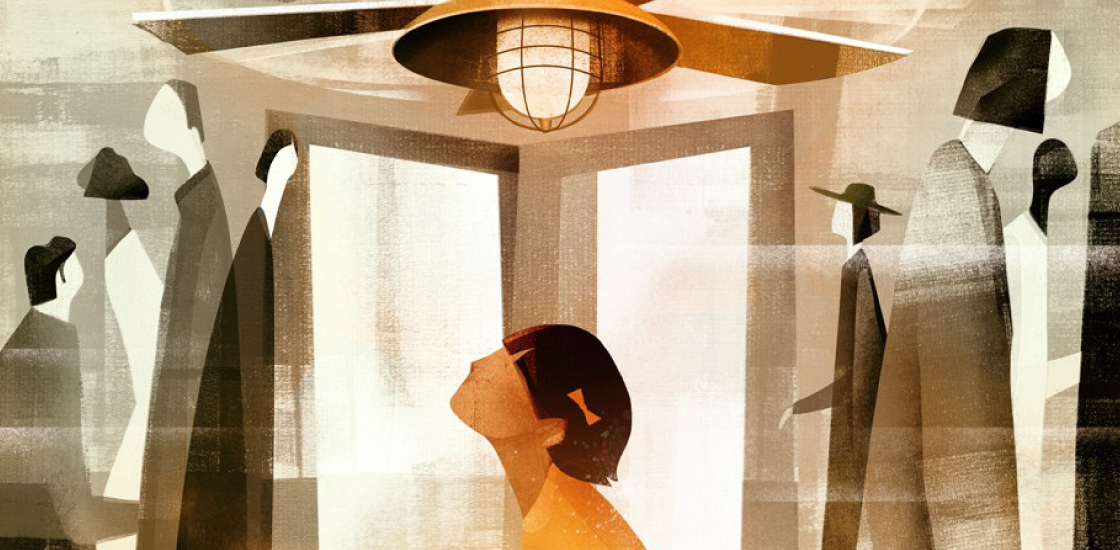For autism researchers, mundane moments spark ‘Eureka’ insights
Autism researchers reflect on the unusual episodes that spawned significant scientific projects.

Inspiration may strike anywhere, at any time. Albert Einstein purportedly polished his theory of relativity using insights from his dreams. Nikola Tesla is said to have drummed up the concept of an alternating current while taking a walk. And plenty of lesser-known scientists have cried ‘Eureka!’ at 3 a.m. on a sleepless night.
We asked autism researchers to describe the strangest source of inspiration for their work. Many of their ‘Aha!’ moments occurred during ordinary life events — a school dance, a casual conversation or an email exchange. Here’s how several scientists describe the seemingly mundane moments that motivated major projects.
Search engine:
Inspiration for my current work came from a conversation with a friend and colleague here at Vanderbilt University whose research group includes several graduate students with autism. The students spent a summer looking through a mass of astrophysical data to find patterns that supercomputers couldn’t find — and they found some.
This conversation inspired me to think about inviting individuals with autism who have unique ‘big-data’ visualization skills to look for patterns in the brain imaging data we are getting from people with autism (and in which we have struggled to find consistent patterns). We are now doing this work.
– Mark Wallace, Louise B. McGavock Endowed Chair, Director of the Vanderbilt Brain Institute in Nashville, Tennessee
Medical mysteries:
My inspiration for exploring the overlapping genetic risk between psychiatric conditions (including autism) and medical ones came from thinking about my own family history. Everyone with a mental health issue also seemed to have medical issues. Coincidence? I thought not.
– Pat Levitt, Simms/Mann Chair in Developmental Neurogenetics at the Children’s Hospital Los Angeles
Shall we dance?
The most unusual source of inspiration was a May Day dance at my daughter’s school. I was chatting with her dance partner’s father and learned he studies schizophrenia. We sketched out an approach for studying social brain systems across diagnostic categories. We’re now carrying out a federally funded study to investigate eye-gaze perception across autism and schizophrenia.

– James McPartland, associate professor of child psychiatry and psychology at the Yale Child Study Center
Publication patchwork
I was appalled when I learned from my graduate students that Ph.D. students at a different site were testing many different variables and publishing only those they found to be significant.
It struck me that it is important to control for the number of variables that are tested. One ethically and scientifically sound approach is to perform an environmental-wide association study, which can test multiple variables rather than testing one specific variable related to an outcome, such as autism. This is complex because different factors can influence the variables. But if we do it right, a study like that can reveal both positive and negative relationships between autism and various factors. We can then test these relationships in an independent sample.
This experience of trial and error was the impetus for a grant I got two years ago, and we are now writing up the results.
– Tonya White, associate professor of pediatric neuroimaging at Erasmus University in Rotterdam, the Netherlands
Casual conversations
I get most of my research ideas from conversations with autistic people — mostly from exchanges in clinic, but increasingly I learn more about autism from autistic people on social media. That’s how I got interested in the idea that many autistic people, especially women, feel compelled to ‘camouflage’ their symptoms in everyday interactions.
– William Mandy, senior lecturer at University College London
Legal-ease
One of my strangest sources of inspiration came from a psychology and law course that I took in graduate school. In this course, we learned about the assumptions of how people in society are expected to behave, and what the legal system considers excusable versus inexcusable reasons for violating the law. This is pertinent to people with autism, whose actions and motives are often misunderstood.
It struck me like a ton of bricks that although many individuals with autism can and do learn about many different kinds of social conventions, they may not have enough opportunities to learn about rare types of interactions that involve the legal system. For example, when you are approached by a police officer, you need to know to stop what you’re doing and follow the officer’s instructions precisely. When you are being interrogated, you must be aware that what you say can be used or quoted in court.
This spurred not only my interest in how the unique features of individuals with autism can influence legal settings, but also investigations into how and when individuals with autism learn implicitly, rather than explicitly, about social norms and behaviors.
– Matthew Lerner, assistant professor of psychology, psychiatry and pediatrics at Stony Brook University in New York
Missed messages
I was fishing through some of my old email accounts to check for bitcoins [a digital currency]. In doing so, I started reading about ‘block chains,’ which are secure, ever-expanding ledgers of digital transactions.
I remember thinking, “This is what the autism field needs: an accountability system for every experiment pushed forward, an unassailable record of experimentation by individual labs as threads in a maturing body of work. A ‘block chain’ for psychological research.”
It’s a fun idea, but it would require buy-in from the field, and an implementation strategy that would be as convenient as possible without sacrificing rigor.
– Frederick Shic, associate professor of pediatrics at the University of Washington in Seattle
Recommended reading

Expediting clinical trials for profound autism: Q&A with Matthew State

Too much or too little brain synchrony may underlie autism subtypes
Explore more from The Transmitter

Mitochondrial ‘landscape’ shifts across human brain

